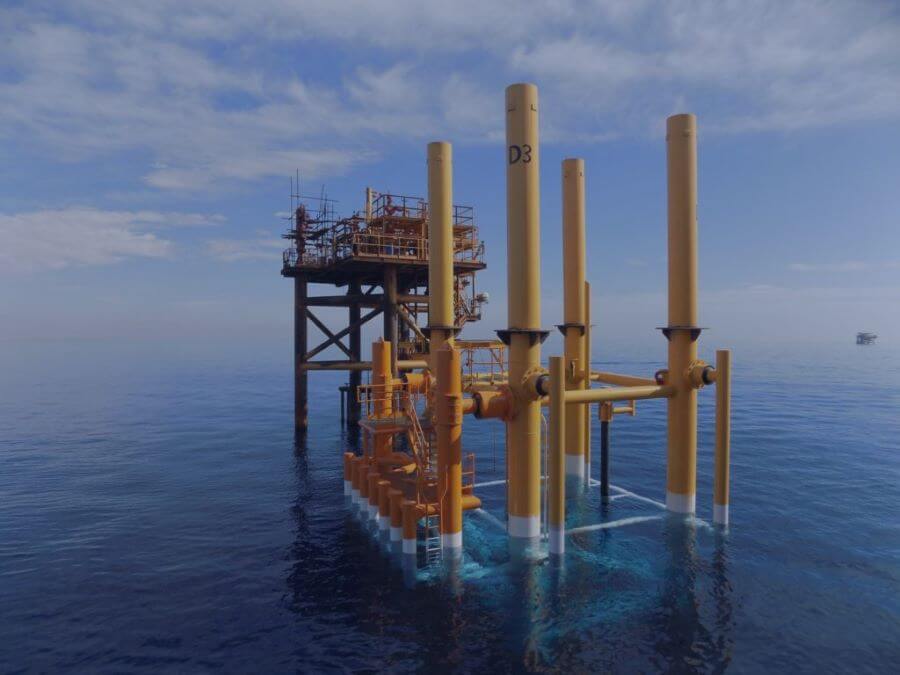
OFFSHORE PLATFORM DESIGN FOR CALCAREOUS FORMATIONS
AMAPETCO’s AMAL field, located in offshore Egypt, offered a design challenge after we were awarded a contract to deliver a new minimum facilities wellhead platform. The challenge? The water depth over the AMAL field shallows to approximately 23m due to a localised high-carbonate content calcareous formation. So, it was crucial the offshore platform design was specifically catered towards this notoriously challenging soil type.
The solution? A conductor-supported platform. This offshore platform design has a shorter delivery lead time, reduced intervention and platform costs, and a simpler project management process. Let’s explain the design process.
PILE PROBLEMS
After gathering high-quality site location soil data, we realised an augmented offshore platform foundation would be needed, which was underlined by foundation strengthening at the neighbouring AMAL-B platform. With an eye on project delivery times, conductor leg, subsea structure, and topside framing design arrangements were developed with all the relevant factors taken into consideration.
Additionally, the diving and drilling logs from the AMAL-B platform and an independent geotechnical data interpretation study revealed a further obstacle. Large reductions in pile foundation performance could be expected over the original design soil profiles. Also, with the list of topside facility requirements increasing, few opportunities arose to reduce topsides weight to compensate for the poor soil support.
Now, we needed to quickly to find the best offshore platform solution, which needed to minimise impact on the client’s delivery schedule. This was crucial because if the campaign fell into the winter, difficult conditions could delay start-up.
PERFECTING OFFSHORE PLATFORM DESIGN
How did we do it? Well our first design proposal was to add secondary piles to the existing subsea structure. This offered the minimum structural change over the original concept, though still required the primary well conductors to be installed to support the topsides. With consideration always given to the future well drilling campaign, the preference was to minimise the initial number of required pile installations.
So, our expert engineers created a second option. This extended the primary conductor pile sleeves to the surface, forming a narrow-legged jacket arrangement on which the topsides could be set using our Sea Swift offshore platform landing interface. This would also provide traditional benefits including pre-installation of boat landing and risers onshore.
We highlighted the secondary pile jacket solution using Sea Swift as the recommended option. With client agreement, the AMAL-C offshore platform and foundation structural design were reviewed and approved by Bureau Veritas. We were able to identify and navigate around a major project roadblock with no impact to topsides design engineering or the fabrication schedule.
And it’s that type of intelligent thinking that can be the difference between profit and pitfall. Our Sea Swift offshore platform offers ultimate flexibility, uniting the advantages of a platform with the rig-run benefits of a subsea development. For shallow water applications, like AMAL-C, it reduces build and installation costs and reduce time to first oil.
Every installation has its own unique challenges but by harnessing our decades of engineering expertise alongside our technologically advanced offshore structures, we can deliver the right solutions for each project.
Contact us to see what smart offshore platform designs we can develop for your installation.